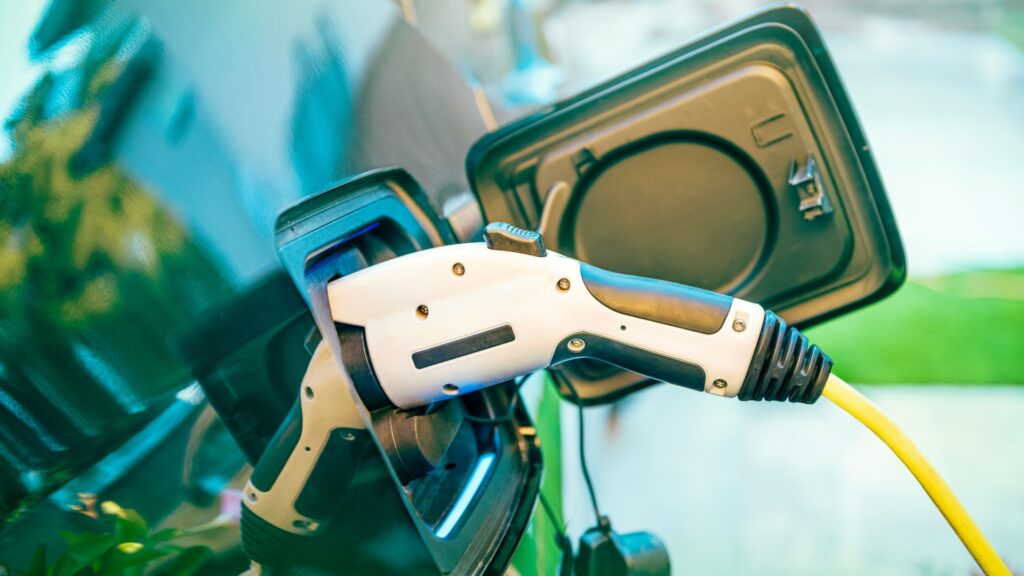As an avid follower of the latest advancements in electric vehicles, I’m always intrigued by the pivotal role that battery technology plays in shaping the future of transportation. The evolution of batteries in electric vehicles has not only revolutionized the automotive industry but also paved the way for a more sustainable and eco-friendly mode of transportation. From lithium-ion to solid-state batteries, the quest for more efficient and longer-lasting power sources is driving innovation in the electric vehicle sector.
In this article, I’ll delve into the fascinating world of battery technology in electric vehicles, exploring the latest trends, breakthroughs, and challenges in this dynamic field. Join me on a journey through the electrifying landscape of electric vehicle batteries, where every advancement brings us closer to a greener and more efficient future on the roads.
Evolution of Battery Technology in Electric Vehicles
Diving into the evolution of battery technology in electric vehicles, I’m excited to share insights on how these power sources have transformed over the years to drive the future of sustainable transportation. From early developments with lead-acid batteries to the latest advancements in solid-state technology, the progression has been remarkable.
- Lead-Acid Batteries: These traditional batteries, although cost-effective, had limitations in terms of energy density and lifespan. Despite being heavy and less efficient, lead-acid batteries laid the groundwork for future innovations in EV power sources.
- Nickel-Metal Hydride (NiMH) Batteries: A step forward from lead-acid, NiMH batteries offered better energy density and longevity. They became popular in hybrid electric vehicles, blending efficiency with reliability.
- Lithium-Ion Batteries: The breakthrough came with lithium-ion batteries, revolutionizing the EV industry. With higher energy density, lighter weight, and improved performance, lithium-ion batteries became the go-to choice for electric vehicles, enabling longer driving ranges and faster charging times.
- Solid-State Batteries: The latest frontier in battery technology, solid-state batteries hold the promise of even greater energy density, enhanced safety, and faster charging capabilities. By replacing liquid electrolytes with solid materials, these batteries are paving the way for the next generation of electric vehicles.
As technology continues to progress, the focus remains on enhancing battery efficiency, sustainability, and overall performance. The evolution of battery technology in electric vehicles signifies a shift towards a greener and more sustainable future in the automotive industry.
Advancements in Lithium-Ion Batteries
Lithium-ion batteries have revolutionized the electric vehicle (EV) industry with their high energy density and fast charging capabilities. The advancements in this technology have significantly improved the performance and efficiency of electric vehicles.
Increased Energy Density
Lithium-ion batteries boast a much higher energy density compared to their predecessors, lead-acid and nickel-metal hydride batteries. This superior energy density allows for more extended driving ranges in electric vehicles, making them a practical choice for everyday use. With advancements in lithium-ion technology, manufacturers can now offer EVs with increased energy storage capacity without significantly increasing the battery size or weight.
Enhanced Charging Capabilities
One of the key advantages of lithium-ion batteries is their enhanced charging capabilities. With faster charging times compared to traditional battery types, EV owners can recharge their vehicles more quickly and conveniently. Improved charging infrastructure, such as fast-charging stations, complements the rapid charging capabilities of lithium-ion batteries, further reducing charging times and increasing the appeal of electric vehicles to consumers.
Impact of Battery Technology on Electric Vehicle Performance
Exploring the impact of battery technology on electric vehicle (EV) performance reveals a profound influence on the overall driving experience. The evolution from lead-acid to nickel-metal hydride (NiMH) and lithium-ion batteries has revolutionized the automotive industry by enhancing efficiency and range. Lead-acid batteries, with their affordability, paved the way for NiMH batteries, offering improved energy density and longevity.
The transition to lithium-ion batteries marked a significant milestone in EV development, delivering higher energy density and faster charging capabilities. This advancement in battery technology has translated into extended driving ranges, making EVs more practical for daily use. The latest progress in lithium-ion batteries has further optimized performance and efficiency, enabling quicker recharging and enhanced driving experiences.
Solid-state batteries represent the future of EV power sources, holding the promise of even greater energy density and enhanced safety features. The ongoing innovation in battery technology aims to propel the electric vehicle industry towards a greener and more sustainable future.
Challenges and Limitations in Battery Technology
Discussing the challenges and limitations in battery technology is crucial for understanding the current landscape of electric vehicles (EVs) and the advancements that are needed to overcome these obstacles.
- Battery Degradation:
- Batteries degrade over time, leading to decreased energy storage capacity.
- This degradation is influenced by factors like temperature, charging cycles, and operating conditions.
- Addressing battery degradation is essential for prolonging battery life and improving overall EV performance.
- Charging Infrastructure:
- The lack of widespread charging infrastructure is a significant limitation for EV adoption.
- Insufficient charging stations can deter potential EV buyers due to concerns about range anxiety.
- Expanding the charging network is critical for encouraging more consumers to switch to electric vehicles.
- Energy Density:
- Current battery technology has limitations in energy density, affecting the driving range of EVs.
- Improving energy density would allow for longer driving ranges and make EVs more competitive with traditional vehicles.
- Innovations in battery chemistry are needed to enhance energy density while maintaining safety standards.
- Cost Considerations:
- The cost of batteries remains a key challenge in making EVs more affordable for the mass market.
- Battery production costs contribute significantly to the overall price of electric vehicles.
- Reducing battery costs through economies of scale and technological advancements is vital for mainstream EV adoption.
By addressing these challenges and limitations in battery technology, researchers and manufacturers can drive innovation towards more sustainable and efficient electric vehicles.
Future Prospects of Battery Technology in Electric Vehicles
Building on the advancements in battery technology, the future of electric vehicles (EVs) looks promising. With the evolution from lead-acid to lithium-ion batteries, the automotive industry has witnessed remarkable progress in enhancing efficiency and performance. The transition has led to EVs becoming more practical for daily use due to improved energy density and extended driving ranges.
Looking ahead, solid-state batteries emerge as a game-changer in the realm of EV technology. These batteries offer the potential for significantly higher energy density and enhanced safety features, which could revolutionize the EV market once again. By continuing to refine solid-state technology, we are on the brink of ushering in a new era of electric vehicles with unprecedented capabilities.
To overcome the challenges hindering widespread adoption, such as battery degradation, limited charging infrastructure, and high costs, ongoing research and innovation are essential. By addressing these obstacles head-on, the automotive industry can pave the way for more sustainable and efficient electric vehicles, driving us closer to a greener and cleaner future.




